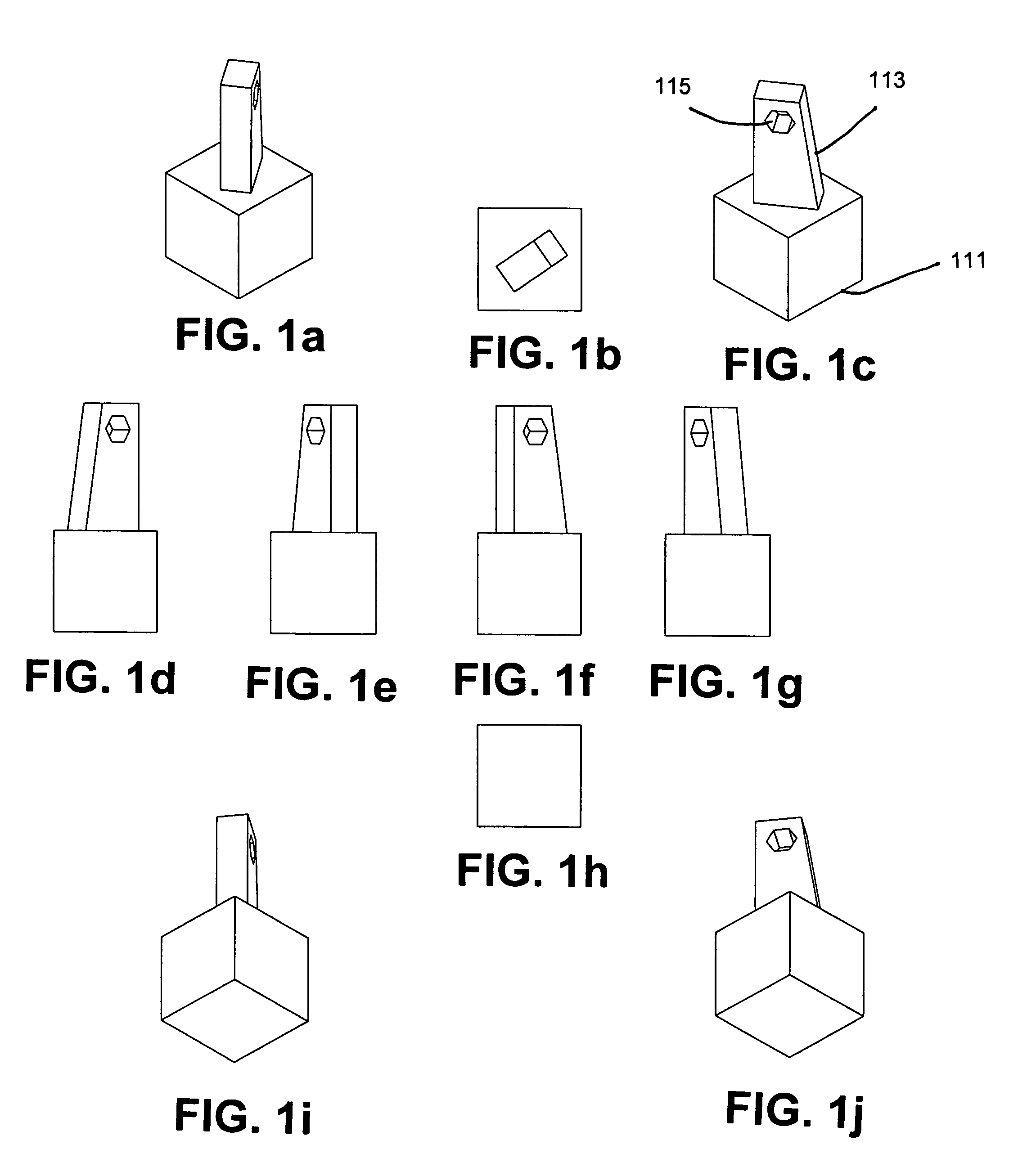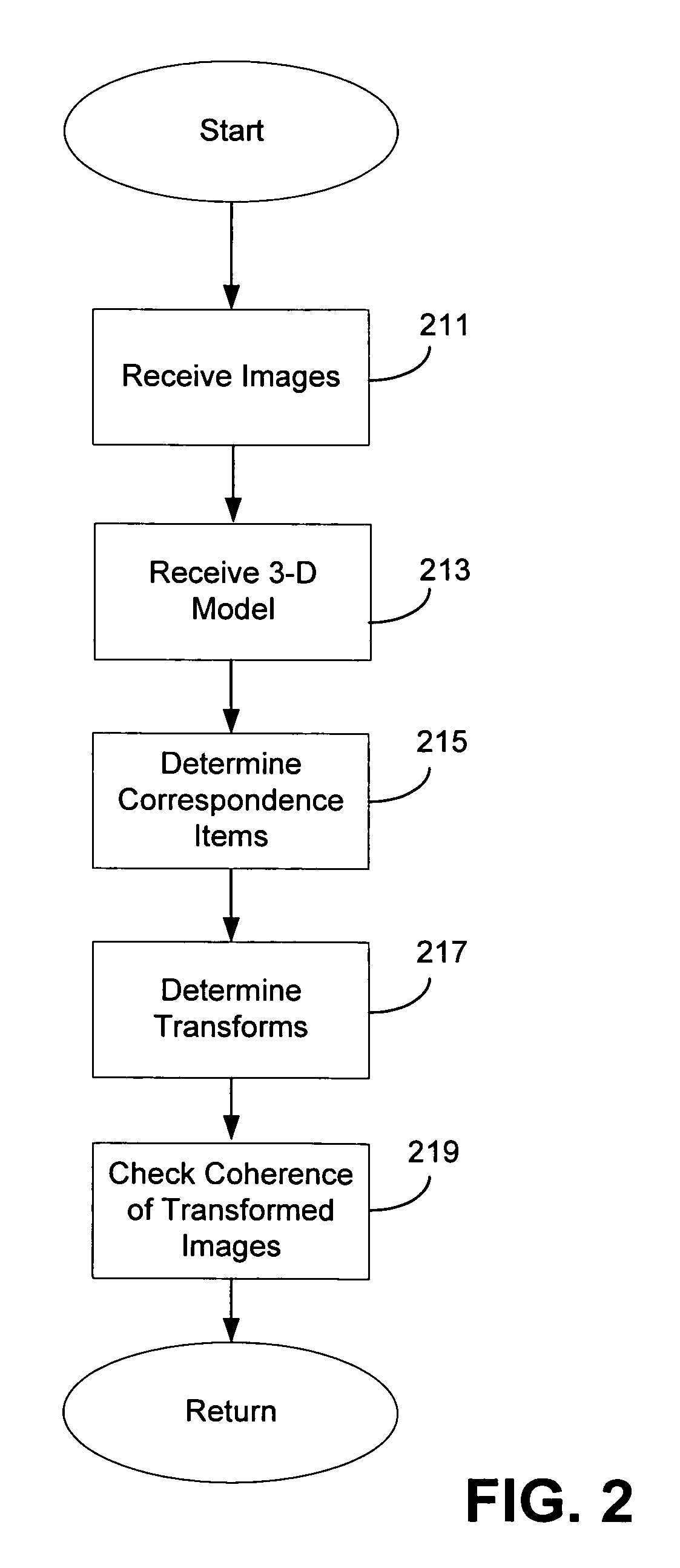Object recognition based on 2D images and 3D models
a 3d model and object recognition technology, applied in the field of object recognition, can solve problems such as unworkable approaches
- Summary
- Abstract
- Description
- Claims
- Application Information
AI Technical Summary
Problems solved by technology
Method used
Image
Examples
Embodiment Construction
[0017]Determining whether a particular object in an image or a group of images is an image of a known object is often desirable. In some embodiments and aspects of the invention a three dimensional model is determined for an object of interest. A number of images are received, with, generally, each of the images believed to include the object. The images, generally, each may portray the object from a possibly different viewpoint. A projective transform from the three dimensional model to each of the viewpoints is determined. For each image an inverse projective transform is performed, mapping the supposed object in the image to the three dimensional model. The mapped image is projectively transformed to viewpoints of other images. The mapped transformed image is compared with the other images. In some embodiments the comparison determines if the mapped transformed image and the other images are meaningfully similar. In some embodiments the comparison is performed by detecting meanin...
PUM
 Login to View More
Login to View More Abstract
Description
Claims
Application Information
 Login to View More
Login to View More - R&D
- Intellectual Property
- Life Sciences
- Materials
- Tech Scout
- Unparalleled Data Quality
- Higher Quality Content
- 60% Fewer Hallucinations
Browse by: Latest US Patents, China's latest patents, Technical Efficacy Thesaurus, Application Domain, Technology Topic, Popular Technical Reports.
© 2025 PatSnap. All rights reserved.Legal|Privacy policy|Modern Slavery Act Transparency Statement|Sitemap|About US| Contact US: help@patsnap.com



